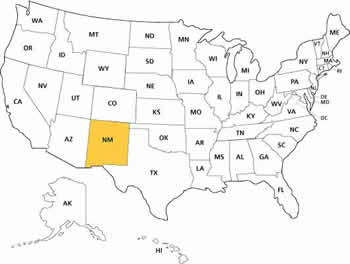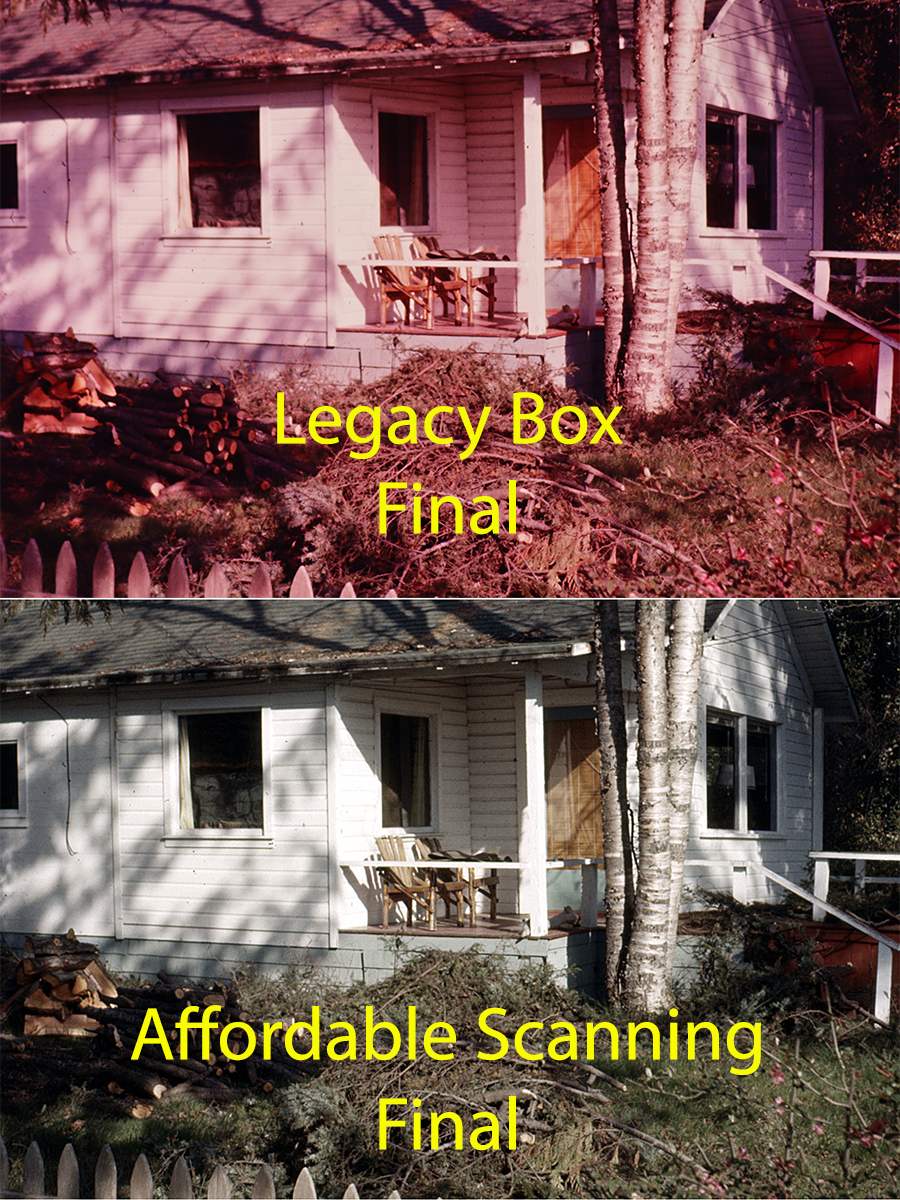Expert Slide and Photo Scanning Since 2002.
4,000 ppi Scanning and Premium Photoshop
Editing On Every Scan. 49¢ most slides.
We also can make PRINTS from your Slides.
www.Slides.Pics
New Mexico 35mm Slide, Photo & Film Scanning

All Scanning companies will NOT give you the same results, Click Here.
While we do NOT have a local office in your state, Affordable Scanning Services LLC has provided services for customers all over New Mexico, including Albuquerque, Las Cruces, Santa Fe, Rio Rancho, Roswell, Farmington, Alamogordo, Clovis, Hobbs, Carlsbad, and the United States and Canada since 2002. In all that time we have worked with multiple people, university's and businesses with many different needs and end results. Our customers are very important to us and they are our best salespeople.
Some of the newer scanning companies, unable to compete with our services, have resorted to sending their customer's 35mm slides, photos and films to India or other third world countries. That is bad enough but what we think is really underhanded, is that they are not up front about this minor little detail. Most of their customers have no idea that their family photo collction is being loaded into a cargo plane and flown 7,000 miles over the ocean to India. And that may be the safest part of the trip.
At Affordable 35mm Slide Scanning, your job does not leave our premises,in Waupun Wisconsin, until we return ship to you. We treat your precious photo collection just like it was our own and I can tell you for certain, that we would never be sending our heirloom family photos to a thirdworld sweatshop in order to save a few dollars.
All jobs are worked by 100% USA citizens who are talented and skillful and they really are artists at heart. They work your family photos just like they were working their very own photos. We realize that this is the only time that you are going to be converting your slides and photos to digital and we are going to make it a good Experience for you.
New Mexico History
The first known inhabitants of New Mexico were members of the Clovis culture of Paleo-Indians. Indeed the culture is named for the New Mexico city where the first artifacts of this culture were discovered. Later inhabitants include Native Americans of the Anasazi and the Mogollon cultures. By the time of European contact in the 1500s, the region was settled by the villages of the Pueblo peoples and groups of Navajo, Apache and Ute.
Francisco Vasquez de Coronado assembled an enormous expedition at Compostela in 1540–1542 to explore and find the mystical Seven Golden Cities of Cibola as described by Cabeza de Vaca who had just arrived from his eight-year ordeal traveling from Florida to Mexico. Coronado's men found several mud baked pueblos in 1541, but found no rich cities of gold. Further widespread expeditions found no fabulous cities anywhere in the Southwest or Great Plains. A dispirited and now poor Coronado and his men began their journey back to Mexico leaving New Mexico behind.
Over 50 years after Coronado, Juan de Oñate founded the San Juan colony on the Rio Grande in 1598, the first permanent European settlement in the future state of New Mexico. Oñate pioneered the grandly named El Camino Real, Royal Road", as a 700 mile (1,100 km) trail from the rest of New Spain to his remote colony. Oñate was made the first governor of the new Province of New Mexico. The Native Americans at Acoma revolted against this Spanish encroachment but faced severe suppression.
Pueblo Ruins at Aztec Ruins National Monument.In 1609, Pedro de Peralta, a later governor of the Province of New Mexico, established the settlement of Santa Fe at the foot of the Sangre de Cristo Mountains. The city, along with most of the settled areas of the state, was abandoned by the Spanish for 12 years (1680-1692) as a result of the successful Pueblo Revolt. After the death of the Pueblo leader Popé, Diego de Vargas restored the area to Spanish rule. While developing Santa Fe as a trade center, the returning settlers founded the old town of Albuquerque in 1706, naming it for the viceroy of New Spain, the Duke of Alburquerque.
As a part of New Spain, the claims for the province of New Mexico passed to independent Mexico following the 1810-1821 Mexican War of Independence. During the brief 26 year period of nominal Mexican control, Mexican authority and investment in New Mexico were weak, as their often conflicted government had little time or interest in a New Mexico that had been poor since the Spanish settlements started. Some Mexican officials, saying they were wary of encroachments by the growing United States, and wanting to reward themselves and their friends, began issuing enormous land grants (usually free) to groups of Mexican families as an incentive to populate the province.
Small trapping parties from the United States had previously reached and stayed in Santa Fe, but the Spanish authorities officially forbade them to trade. Trader William Becknell returned to the United States in November 1821 with news that independent Mexico now welcomed trade through Santa Fe.
William Becknell left Independence, Missouri, for Santa Fe early in 1822 with the first party of traders. The Santa Fe Trail trading company, headed by the brothers Charles Bent and William Bent and Ceran St. Vrain, was one of the most successful in the West. They had their first trading post in the area in 1826, and, by 1833, they had built their adobe fort and trading post called Bent's Fort on the Arkansas River. This fort and trading post, located about 200 miles (322 km) east of Taos, New Mexico, was the only place settled by whites along the Santa Fe trail before it hit Taos. The Santa Fe National Historic Trail follows the route of the old trail, with many sites marked or restored.
Route of the Old Spanish TrailThe Spanish Trail from Los Angeles, California to Santa Fe, New Mexico was primarily used by Hispanics, white traders and ex-trappers living part of the year in or near Santa Fe. Started in about 1829, the trail was an arduous 2,400 (3862 km) mile round trip pack train sojourn that extended into Colorado, Utah, Nevada and California and back, allowing only one hard round trip per year. The trade consisted primarily of blankets and some trade goods from Santa Fe being traded for horses in California.
The Republic of Texas claimed the mostly vacant territory north and east of the Rio Grande when it successfully seceded from Mexico in 1836. New Mexico authorities captured a group of Texans who embarked an expedition to assert their claim to the province in 1841.
Following the Mexican-American War, from 1846-1848 and the Treaty of Guadalupe Hidalgo in 1848, Mexico forcibly ceded its mostly unsettled northern holdings, today known as the American Southwest and California to the United States of America in exchange for an end to hostilities, the evacuation of Mexico City and many other areas under American control. Mexico also received $15 million cash, plus the assumption of slightly more than $3 million in outstanding Mexican debts.
The Congressional Compromise of 1850 halted a bid for statehood under a proposed antislavery constitution. Texas transferred eastern New Mexico to the federal government, settling a lengthy boundary dispute. Under the compromise, the American government established the Territory of New Mexico on September 9, 1850. The territory, which included most of the future states of Arizona, New Mexico, and parts of Colorado, officially established its capital at Santa Fe in 1851.
The United States acquired the southwestern boot heel of the state and southern Arizona below the Gila river in the mostly desert Gadsden Purchase of 1853. This purchase was desired when it was found that a much easier route for a proposed transcontinental railroad was located slightly south of the Gila river. The Southern Pacific built the second transcontinental railroad though this purchased land in 1881.
During the American Civil War, Confederate troops from Texas briefly occupied the Rio Grande valley as far north as Santa Fe. Union troops from the Territory of Colorado re-captured the territory in March 1862 at the Battle of Glorieta Pass. The Territory of Arizona was split off as a separate territory on February 24, 1863.
1867 mapThere were centuries of conflict between the Apache, the Navajo and Spanish-Mexican settlements in the territory. It took the federal government another 25 years after the Civil War to exert control over both the civilian and Native American populations of the territory. This started in 1864 when the Navajo were sent on "The Long Walk" to Bosque Redondo Reservation and then returned to most of their lands in 1868. The Apache were moved to various reservations and Apache wars continued until Geronimo finally surrendered in 1886.
The railway encouraged the great cattle boom of the 1880s and the development of accompanying cow towns. The cattle barons could not keep out sheepherders, and eventually homesteaders and squatters overwhelmed the cattlemen by fencing in and plowing under the "sea of grass" on which the cattle fed. Conflicting land claims led to bitter quarrels among the original Spanish inhabitants, cattle ranchers, and newer homesteaders. Despite destructive overgrazing, ranching survived and remains a mainstay of the New Mexican economy.
Albuquerque, the largest city in New Mexico, on the middle Rio Grande, was incorporated in 1889.
Congress admitted New Mexico as the 47th state in the Union on January 6, 1912. The admission of the neighboring State of Arizona on February 14, 1912 completed the contiguous 48 states.
The United States government built the Los Alamos Research Center in 1943 amid the Second World War. Top-secret personnel there developed the atomic bomb, first detonated at Trinity site in the desert on the White Sands Proving Grounds between Socorro and Alamogordo on July 16, 1945.
Albuquerque expanded rapidly after the war. High-altitude experiments near Roswell in 1947 reputedly led to persistent but unproven suspicions that the government captured and concealed extraterrestrial corpses and equipment. The state quickly emerged as a leader in nuclear, solar, and geothermal energy research and development. The Sandia National Laboratories, founded in 1949, carried out nuclear research and special weapons development at Kirtland Air Force Base south of Albuquerque and at Livermore, California.
Located in the remote Chihuahuan Desert the Waste Isolation Pilot Plant (WIPP) is located 26 miles (42 km) southeast of Carlsbad. Here nuclear wastes are buried deep in carved out salt formation disposal rooms mined 2,150 feet (655 m) underground in a 2,000-foot (610 m) thick salt formation that has been stable for more than 200 million years. WIPP began operations on March 26, 1999."
From:
https://en.wikipedia.org/wiki/New_mexico
|
About Our Company Copyright 2024 |
|
Email: Click Here After hours you will get a quicker response by using email. We answer email at ALL hours. Telephone messages are replied to during business hours. Affordable Scanning Services LLC 400 Bittersweet Lane Waupun, WI 53963
|
 Home
Home Order Forms
Order Forms



